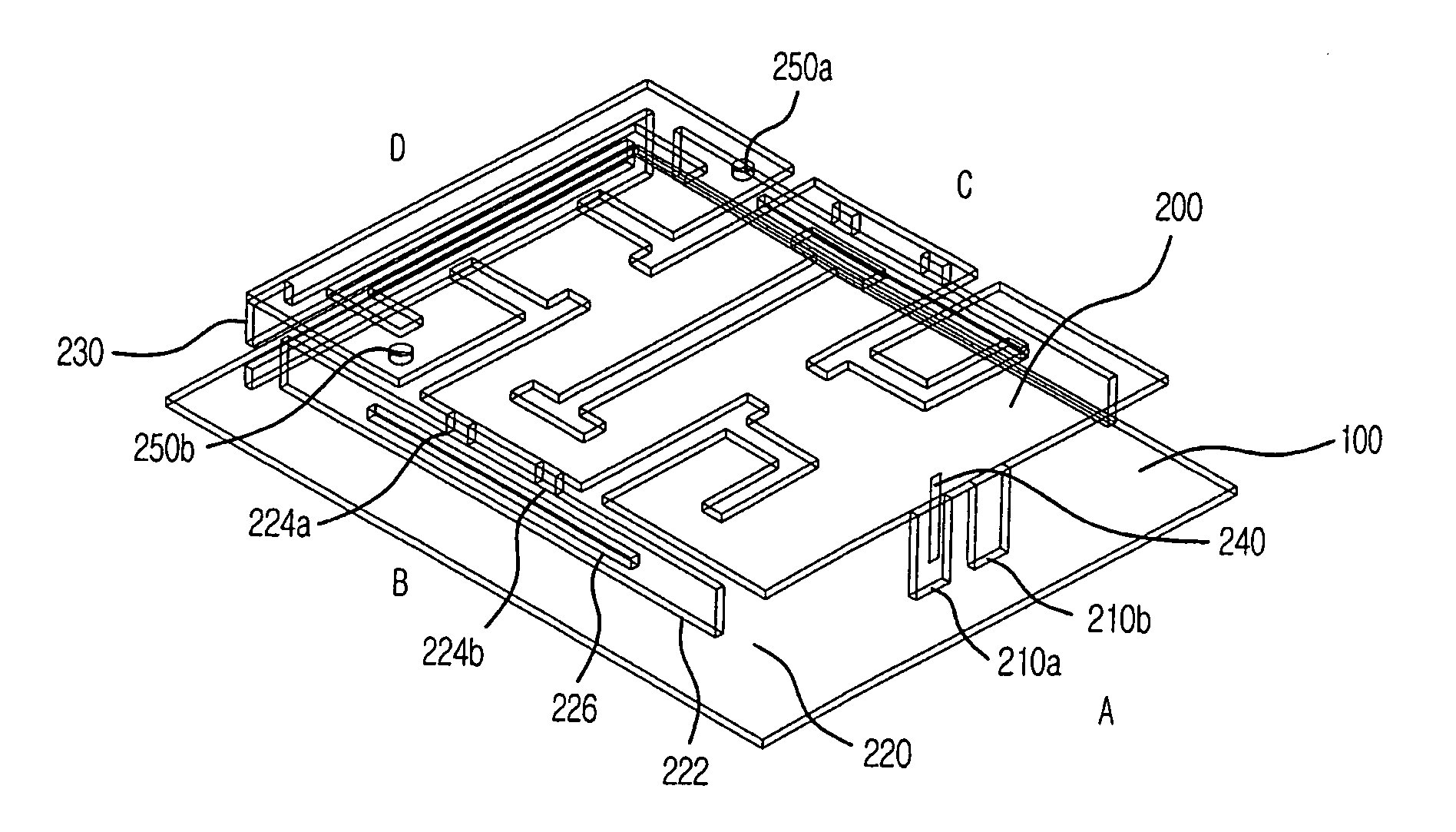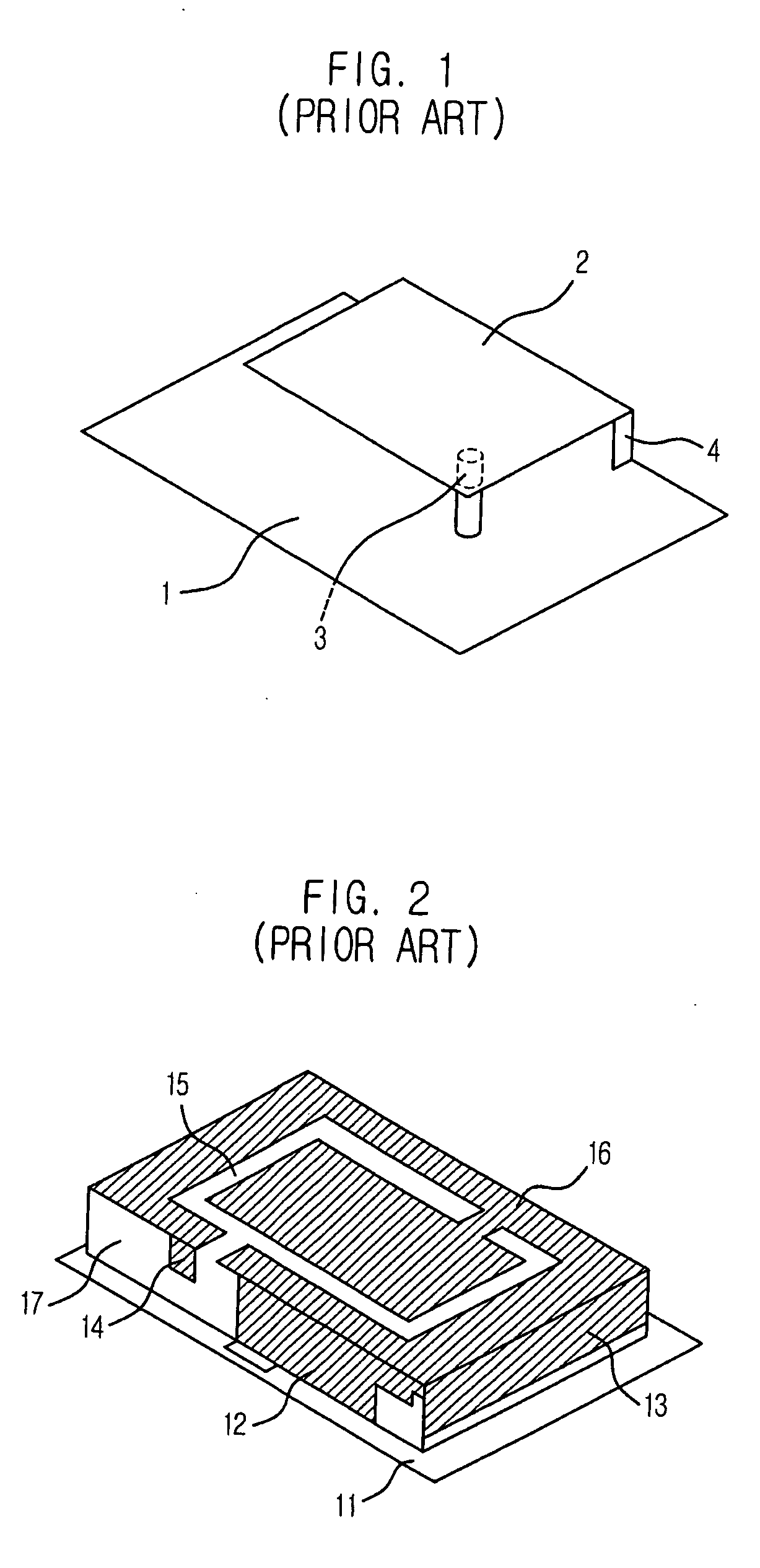PIFA, RFID tag using the same and antenna impedance adjusting method thereof
a technology of radio frequency identification and impedance adjustment, which is applied in the direction of antenna earthing, antenna structure form, resonance antenna, etc., can solve the problems of affecting the return loss characteristics and radiation pattern characteristics of the tag antenna, bit too large to be used as a radio frequency identification (rfid) tag antenna, and requiring a lot of attention in designing an antenna, etc., to achieve easy impedance matching
- Summary
- Abstract
- Description
- Claims
- Application Information
AI Technical Summary
Benefits of technology
Problems solved by technology
Method used
Image
Examples
Embodiment Construction
[0025] Other objects and aspects of the invention will become apparent from the following description of the embodiments with reference to the accompanying drawings, which is set forth hereinafter.
[0026]FIG. 3 is a perspective view describing a Planar Inverted-F Antenna (PIFA) in accordance with an embodiment of the present invention. The PIFA includes a ground surface 100 in the lower part and a radiation patch 200 with a predetermined space from the ground surface 100. The radiation patch 200 is short from the ground surface 100 by shorting plates 210a and 210b. The radiation patch 200 has a radiating edge where radiation occurs mainly and a non-radiating edge. In FIG. 3, the regions A, B and C of the shorting plates 210a and 210b correspond to the non-radiating edge, whereas the region D in opposite to the shorting plates 210a and 210b corresponds to the radiating edge.
[0027] In the non-radiating edges B and C of the antenna, reactance controlling stubs 250 are extended from th...
PUM
 Login to View More
Login to View More Abstract
Description
Claims
Application Information
 Login to View More
Login to View More - R&D
- Intellectual Property
- Life Sciences
- Materials
- Tech Scout
- Unparalleled Data Quality
- Higher Quality Content
- 60% Fewer Hallucinations
Browse by: Latest US Patents, China's latest patents, Technical Efficacy Thesaurus, Application Domain, Technology Topic, Popular Technical Reports.
© 2025 PatSnap. All rights reserved.Legal|Privacy policy|Modern Slavery Act Transparency Statement|Sitemap|About US| Contact US: help@patsnap.com



